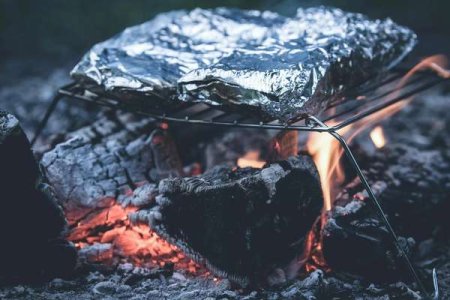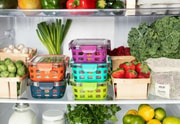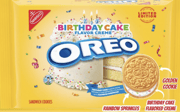The Foil Debate Finally Settled by Reynolds: Are You Using It All Wrong?
By
Veronica E.
- Replies 0
The kitchen is often the heart of the home, where culinary magic happens and family traditions are born. Among the many tools in our kitchen arsenal, one stands out for its simplicity and versatility: aluminum foil.
But for years, a question has puzzled home cooks: Is there a right or wrong side to use when cooking with foil? Today, we’re unwrapping the mystery, with insights from Reynolds, a company that has been a household name for over seven decades.
But when it comes to the shiny and dull sides of foil, confusion reigns. Does it matter which side faces out when you cook?

The answer, it turns out, is rooted in the manufacturing process. According to Abbey Thiel, Ph.D., a food scientist and expert behind Abbey the Food Scientist, the difference between the shiny and dull sides of foil is simply a result of how it’s made.
During milling, two sheets of aluminum are rolled together to prevent tearing. The side that comes in contact with the roller becomes shiny, while the side that touches the other sheet remains dull.
Both sides perform equally well in terms of heat conduction, which is the primary function of foil in cooking.
The shiny side does reflect a bit of heat radiation, but the effect is so minimal that it doesn't impact your cooking results.
However, with nonstick foil, there is a correct side to use. Reynolds advises that the dull side should face up to make the most of its non-stick properties. A handy tip: if you can read the writing on the foil, you’ve got it the right way up!
When you cover a dish with foil, you're trapping steam to retain moisture, and when you line a pan, you're shielding the food from direct heat.
However, caution should be exercised with acidic or salty foods, as they can cause a small amount of aluminum to leach into the food.
While this is considered safe by health authorities, individuals with certain health conditions may want to limit their exposure.
The appearance difference is purely cosmetic and has no effect on your cooking. For nonstick foil, just remember to keep the dull side up. Now that the foil debate has been settled, you can focus on the joy of cooking without worrying about which side to use!

Have you ever been stumped by which side of the foil to use? Or maybe you’ve discovered some clever foil-related kitchen hacks you'd like to share with our GrayVine community? Drop a comment below and let’s keep the culinary conversation going!
But for years, a question has puzzled home cooks: Is there a right or wrong side to use when cooking with foil? Today, we’re unwrapping the mystery, with insights from Reynolds, a company that has been a household name for over seven decades.
The Shiny vs. Dull Side of Foil: The Mystery Unveiled
Aluminum foil has become a kitchen staple, used for everything from wrapping leftovers to lining baking sheets and covering dishes.But when it comes to the shiny and dull sides of foil, confusion reigns. Does it matter which side faces out when you cook?

Aluminum foil is versatile, essential, and full of surprises—are you using it the right way? Image Source: Pexels / Gustavo Fring.
The answer, it turns out, is rooted in the manufacturing process. According to Abbey Thiel, Ph.D., a food scientist and expert behind Abbey the Food Scientist, the difference between the shiny and dull sides of foil is simply a result of how it’s made.
During milling, two sheets of aluminum are rolled together to prevent tearing. The side that comes in contact with the roller becomes shiny, while the side that touches the other sheet remains dull.
The Great Foil Face-Off: Does It Really Matter?
So, should you be using the shiny side or the dull side when cooking? Reynolds has settled the debate once and for all: it doesn't matter.Both sides perform equally well in terms of heat conduction, which is the primary function of foil in cooking.
The shiny side does reflect a bit of heat radiation, but the effect is so minimal that it doesn't impact your cooking results.
However, with nonstick foil, there is a correct side to use. Reynolds advises that the dull side should face up to make the most of its non-stick properties. A handy tip: if you can read the writing on the foil, you’ve got it the right way up!
Foil in the Kitchen: More Than Just a Wrap
Aluminum foil’s uses extend far beyond simply covering dishes. It can be shaped into pouches for grilling vegetables, used to line pans for easy cleanup, and even serve as a protective shield to prevent food from over-browning.When you cover a dish with foil, you're trapping steam to retain moisture, and when you line a pan, you're shielding the food from direct heat.
Safety First: When to Use Foil and When to Avoid It
Aluminum foil is generally safe to use in cooking. It’s excellent for preventing moisture loss, making it ideal for freezer storage or under the broiler or on the grill.However, caution should be exercised with acidic or salty foods, as they can cause a small amount of aluminum to leach into the food.
While this is considered safe by health authorities, individuals with certain health conditions may want to limit their exposure.
The Final Verdict on Foil
Whether you're a seasoned chef or a kitchen novice, the takeaway is clear: with standard or heavy-duty foil, feel free to use either side.The appearance difference is purely cosmetic and has no effect on your cooking. For nonstick foil, just remember to keep the dull side up. Now that the foil debate has been settled, you can focus on the joy of cooking without worrying about which side to use!
Key Takeaways
- The shiny and dull sides of aluminum foil are a result of the manufacturing process, not distinctive properties.
- It doesn't significantly matter which side of regular aluminum foil you use for cooking, as both conduct heat equally well.
- For nonstick aluminum foil, the dull side should face up, as this is the nonstick side, to get the benefits of nonstick properties.
- Aluminum foil is safe to use for cooking, but caution should be taken with acidic or salty foods to prevent aluminum from leaching into the food.
Have you ever been stumped by which side of the foil to use? Or maybe you’ve discovered some clever foil-related kitchen hacks you'd like to share with our GrayVine community? Drop a comment below and let’s keep the culinary conversation going!







